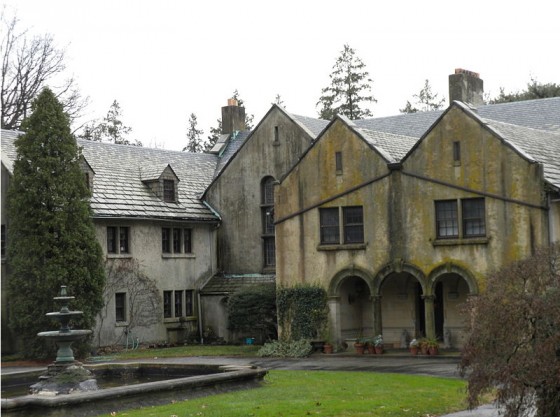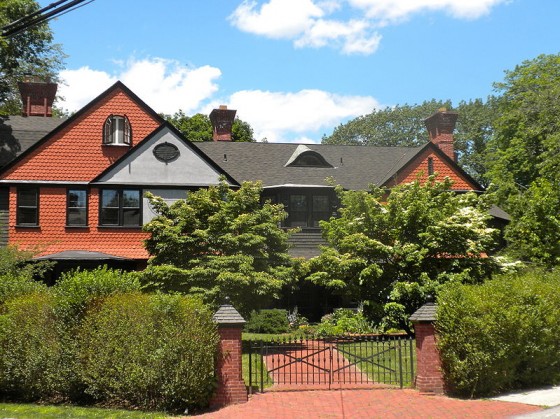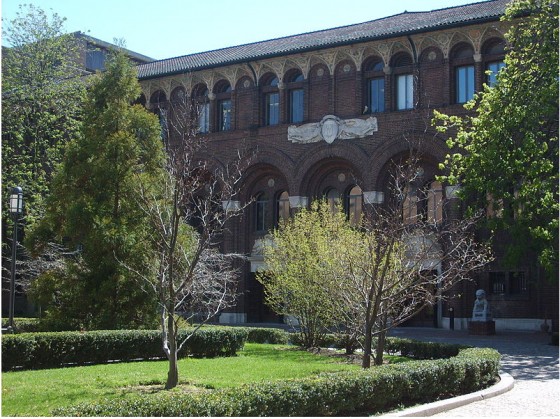Although Wilson Eyre, Jr. (1858-1944) was born in Florence, Italy, much of his architectural practice took place in the Philadelphia area. When he was eleven, Eyre’s family ventured back to the United States to live in Newport, Rhode Island. Later on, after Eyre had studied architecture for a brief time at MIT, he came to Philadelphia in 1877 to work under architect James Peacock Sims. In 1882, Sims passed away, leaving his business in Eyre’s hands. It wasn’t long before Eyre began to receive local and national acclaim for his distinctive architectural style. His reputation was founded on the ability to carefully create asymmetrical country homes that enjoyed warm atmospheres, and for being an innovator in the Shingle style.
An American architectural style with roots in New England, the Shingle style combined English influence with Colonial American styles in emphasizing a simplified, flat shingle design. Those utilizing the Shingle style, in a manner echoed by jean designers today, used faded shingles (sometimes dipped in buttermilk) to create the illusion that a new building was actually aged and weathered. Shingle-style homes focused on horizontal continuity both inside and out in order to make the architecture seem more natural in its surroundings. Wilson Eyre used horizontal planes as a means to design his asymmetrical homes. Often, he would branch all first floor rooms off of an open living hall which was essentially the single axle of the buildings layout. Eyre even incorporated the second floor staircase into this central hall.
Eyre taught at the University of Pennsylvania in the 1890’s. He urged potential architects to “not have theories,” instead asking them to draw all of their work from inspiration. His lessons seem to coincide with his retrospective negativity for having, as a young architect, highlighted originality over simple technicality. Some noted works of his, which you may recognize, include the Anglecot (1883) home in Chestnut Hill (which is in the registry for National Historic Places), Allgates (altered in 1910) which is in Haverford, and the UPenn Museum of Archaeology and Anthropology (1895-99) at 3260 South St. You may also remember these articles from last week which cover two other works of this noteworthy architect.
— Alex Graziano



